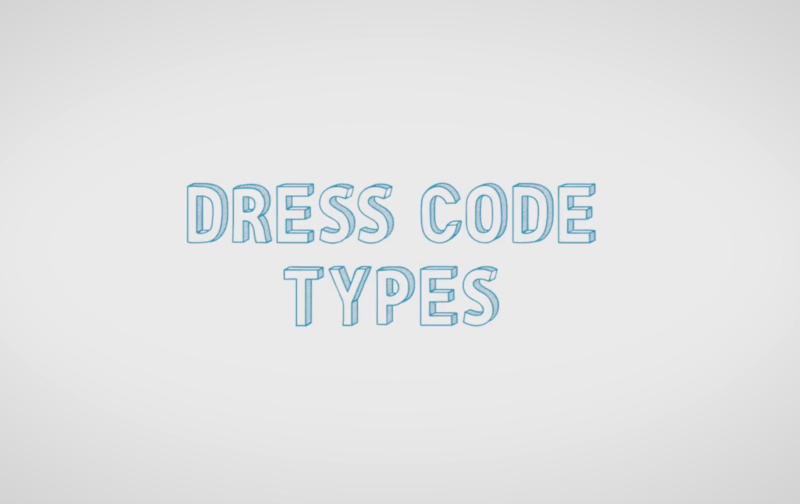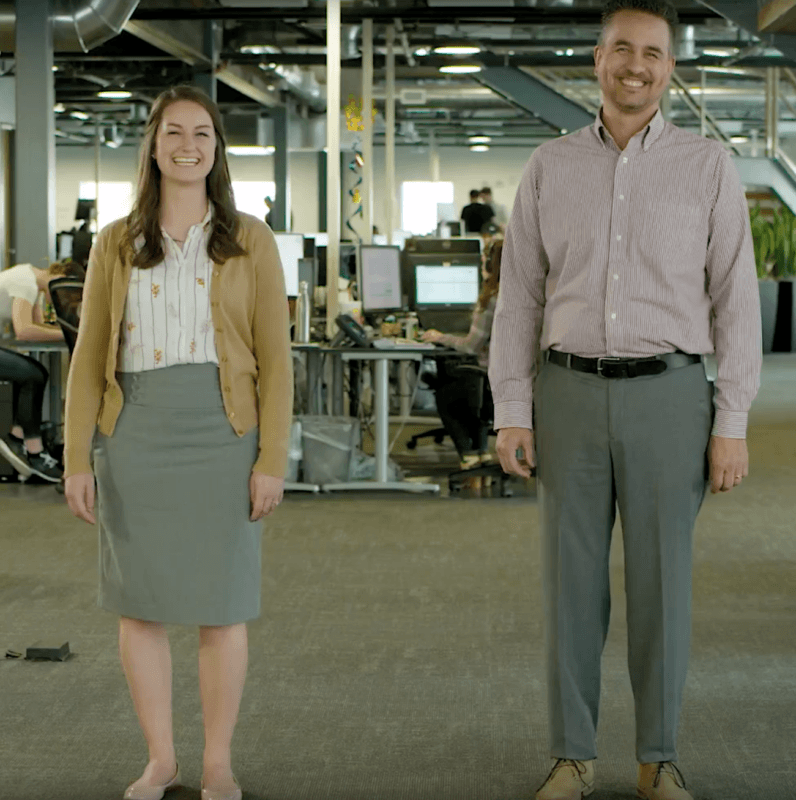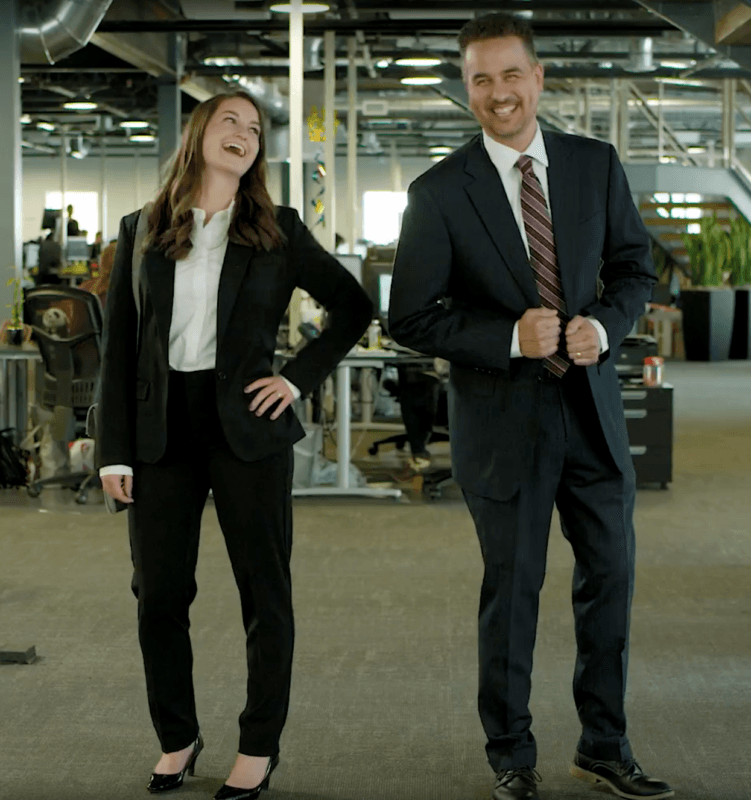What Should I Wear to a Job Interview?
Job Interview Attire 101
Even if your candidates aren’t asking you what they should wear to their job interview, you can be sure that they’re asking themselves. Helping them know what interview attire to wear to their job interview will go a long way as far as candidate experience goes. Later in the post, we provide some casual, business casual, and professional interview outfit templates you can send to job applicants before they show up for their big moment. We’ll also cover a list of what not to wear to an interview, but first, let’s dive into what a candidate should wear to their interview.
Workplace dress norms have changed as much as the job application process itself, shifting and diversifying since the time when people pounded the pavement in carefully pressed suits handing resumés to receptionists.
Modern workplaces now fall on a spectrum from traditional business attire to “Who cares? We’re all working remotely.” Candidates understand the importance of fitting in with the right interview outfit and often spend hours searching for advice on a wide variety of topics including what accessories to wear, how to look smarter, what questions to ask in an interview, and much more. This adds an element of stress and uncertainty to the interview process.
Interview attire shouldn’t be the main focus on an interview.
Instead of leaving your interview dress attire requirements to two-word descriptions like business casual or business professional, spend the time to communicate your organization’s dress expectations to your candidates. This will help both the interviewer and interviewee focus on connections—not clothing.
Let’s dive into some different interview dress code types. Since dress codes vary wildly depending on the business and industry we’ll provide some suggestions to help you communicate the right way.
Business Casual Interview Dress
What is Business Casual for Women?
- Blouse and dress pants
- Conservative dresses or skirts (as long as they’re an appropriate length)
- Cardigans knit shirts (jackets are optional)
- Nice, closed-toe shoes
- Hosiery can also be considered optional
What is Business Casual for Men?
- Dress Slacks
- Chinos or khakis
- Tucked in, long-sleeved button-down shirt
- Tie can be considered optional
- Sweater (jacket is optional)
- Nice shoes
- Polo shirts should be worn with caution (even if they are appropriate for the dress code, you may want to dress just a bit nicer)
- One more thing… Don’t be afraid to pull out the iron!
An example of a business casual outfit for males and females
Business Professional Dress For Interviews
What is Business Professional for Women?
- Business suits, pant suits, dress shirts
- Conservative shirt
- Neutral colors
- Neutral hosiery
- Conservative, professional shoes (high heels or closed-toe pumps)
- Limited jewelry
- Professional and neat hairstyle
- Light makeup
What is Business Professional for Men?
- Business suit and tie
- Solid colored dress shirt
- Dark socks
- Conservative black or brown belt (match shoes)
- Conservative, professional shoes
- Pocket square (considered optional)
An example of a business professional interview attire
Casual Interview Attire
What is Casual Dress for Women?
- Modesty is key to a casual dress code
- Jeans without holes
- Sports jacket paired with jeans
- Appropriate sweater or sports coat
- Comfortable shoes (flats or other)
What is Casual Dress for Men?
- Jeans without holes
- Simple sweaters
- Casual shirt paired with jeans and jacket
- Comfortable shoes
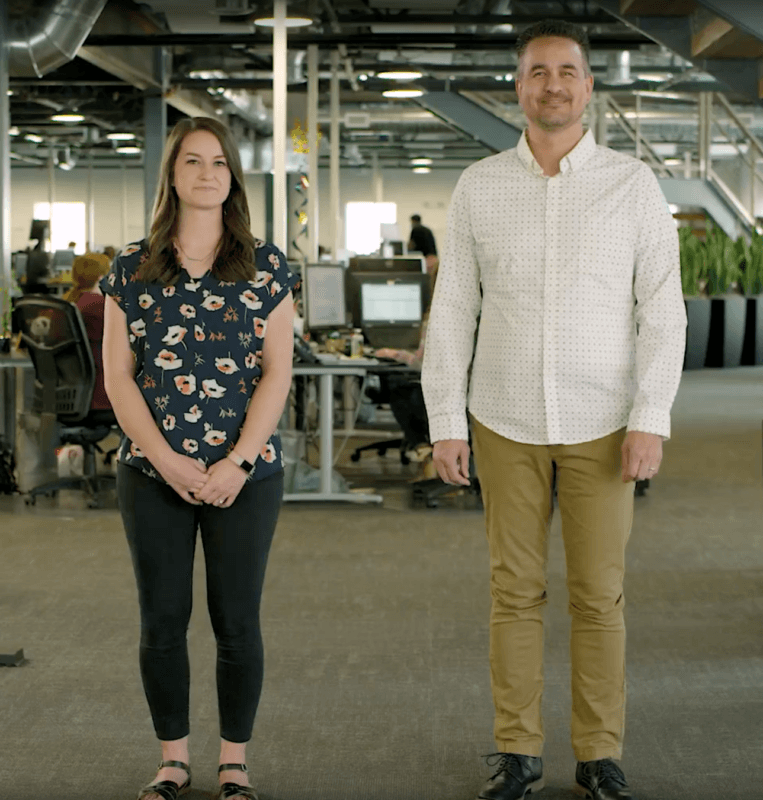
An example of a casual outfit for a job interview
What NOT to Wear to a Job Interview
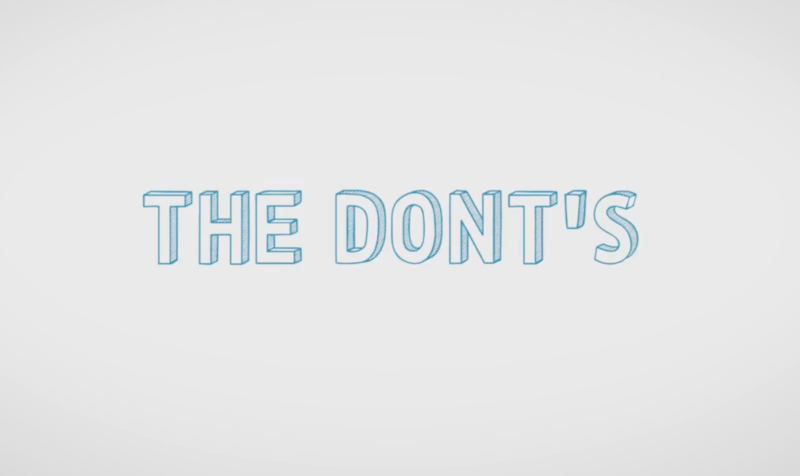
While a lot of this list goes without saying, you’d be surprised what people will sometimes wear to an interview.
- Pajamas
- Shorts
- Gym Clothes
- Hats
- Flip Flops
- Holey Jeans
- Too much perfume
- Too much makeup
- Large accessories
- Outdated or flashy clothes
- Sunglasses
- Underwear that is visible
- Revealing clothing of any kind
Creating The Right First Impression
The main purpose of an in-person interview is to get to know a candidate (and to let them get to know your company). An easy first step to delivering an excellent candidate experience is letting candidates know how to dress for an interview. In this tight job market, a candidate’s impression of your organization is just as important as your hiring managers’ impressions of each applicant. If the job isn’t a good match, your candidates may go with another offer, or change their minds after they’ve accepted your offer.
So the question isn’t whether first impressions matter. They do. The question is which impressions you should focus on in your limited interactions with your candidates.
Harvard psychologist Amy Cuddy explains that there are two main impressions that come out of a job interview:
- Warmth: where your candidates decide whether or not they can trust your organization
- Competence: where they decide whether or not they respect your organization’s accomplishments.
Of the two, having trust is more important than commanding respect. Trust leads to respect because trust leads candidates to want to continue with your organization.
Communication during the hiring process gives your candidates their first taste of what it’s like to collaborate in your organization. When you communicate your organization’s expectations—from what to wear to the interview to outlining each step of the hiring process—you demonstrate that your organization is competent while building trust with your job candidates. You also help your candidates remove fears that your organization will judge them on something inessential (like an untucked shirt) instead of their real merits.
Delivering the Interview Dress Details
Start by identifying your company’s dress code, both in the call to schedule the interview and in email reminders you send. Expand on the standard categories of business professional, business casual, or casual with requirements specific to your organization—such as a policy against open-toed shoes or shorts.
After communicating your standards, you can re-emphasize the importance of dressing comfortably—the goal should be to focus on the interview, instead of adjusting collars or skirts.
Your communication should create a clear picture of what it’s like to work in your organization. Will your clients expect professionals with conservative haircuts and upscale fashion? Does your organization require a company uniform? Will bearded men need to shave, or just keep their beards well-groomed? Will employees need a certain type of work clothing for safety reasons? Knowing the requirements in advance helps candidates understand the investment they will need to make in their appearance to be a part of your organization.
Of course, communication takes time, and time is often in short supply among hiring managers and recruiters. So we’ve provided the following templates that you can adapt to craft your own messaging to let your candidates know what to wear to a job interview. Sending these details ahead of time can ensure that your organization’s definitions match up with your candidates’.
Business Professional Attire Template
“We’re excited to meet with you! So you know what to expect, our office observes business professional attire to meet the needs of our clientele. What does this mean at [insert your company here]?
- Business suit and tie
- Blazer and dress pants
- Button-down dress shirts
- Pantsuits or skirts
- Scuff-free shoes
We ask that our employees maintain conservative haircuts and dress, with a clean-shaven appearance or neatly-groomed facial hair. Please dress comfortably in this style so that we can focus on getting to know you better during the interview.”
Business Casual Attire Template
“We’re excited to meet with you! So you know what to expect, our office observes business casual attire. What does this mean at [insert your company here]?
- Dress slacks
- Chinos or khakis
- Tucked in button-down shirt
- Polo shirts
- Blouse and dress pants
- Conservative dresses or skirts
- Nice shoes
Please dress comfortably in this style so that we can focus on getting to know you better during the interview.”
Casual Interview Attire Template
“We’re excited to meet with you! So you know what to expect, we have what we call a smart casual dress code. What does this mean?
- Collared shirts
- Conservative pants
- A comfortable dress
- Shoes without too much wear and tear
Feel free to dress comfortably so that we can focus on getting to know you better during the interview (but not so comfortably that we wonder if you’re heading to the gym afterward).”
What questions do you have about dress codes? Leave a comment below!
Get caught up every month on all things HR. Don't worry, we promise we won't spam you.
Brian Anderson expertly decodes all things HR, drawing on a decade of technical writing in the business organization industry to provide editorial support to internal and external learning programs at BambooHR. His writing explores the different motivations that shape the employee experience and the psychology of human resources.



